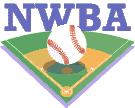| T O P I C R E V I E W |
| Rapid |
Posted - 06/04/2018 : 06:32:51
The throwing arm of a baseball player has one of the toughest jobs in the world. It gets asked to create tremendous torque and then gets asked to slow it back down and control that torque. In fact the humeral head has been reported to internally rotate more than 7,000 degrees per second in high velocity pitching! (Seroyer et al., 2010) That is one incredible feat!!
However, just as everything else in life, such demand can come at quite a cost, especially without proper strength and stability. The baseball player must have a strong rotator cuff and adequate scapulo-humeral rhythm (fancy talk for the shoulder blade working in sync with the arm bone) in order to avoid injury. The rotator cuff contrary to popular belief, is not simply one structure and is made up of a team of 4 tiny muscles. These muscles act together with the deltoid (big shoulder muscle) to both stabilize and move the arm bone in the socket. While the rotator cuff team is busy doing its job, the shoulder bladeís team of muscles also is hard at work. There are more than 17 muscles that attach to the shoulder blade, as it is surprisingly capable of 6 different types of movements. It can rotate up, down, tilt back and forth, and glide on the rib cage. If the baseball playerís shoulder blade does not move properly with the arm bone things such as pain, decreased velocity, and loss of range of motion can occur.
In consideration of all these characters in the story of the throw, it is extremely important to train the shoulder and scapula with optimal positioning and proper technique. This is one the integral parts of our assessment process as we look at the following:
Can the athlete flex the arm without rib cage extension compensation? (Full range of motion over head)
Can the athlete adequately internally and externally rotate the humerus?
Can the athlete adequately rotate to each side?
Does the athlete rely heavily on larger muscles like pectorals or latissimus?
Can the athlete achieve full range of motion with scapular (shoulder blade) motions?
All of these questions paint a picture for our trainers to make the best decisions about what type of movements, loading, or corrective actions to take for each athlete. Some baseball players need to work on overhead mobility and movement quality, while others need to build protective strength around the joint itself. While itís true that baseball players generally need the same thing in terms of strength and power, it doesnít necessarily mean they should take the same paths to achieve these adaptations. We believe strongly in managing the stress of the throwing arm and giving each athlete exercises tailored to their needs. I like to think of arm care akin to maintaining the basics in a car. Changing the oil, gauging tire pressures, and rotating tires can seem tedious and not always impactful, but doing so can tremendously increase the life and value of your car. If these things are ignored all together however, youíll certainly find yourself in need of a repair. In much the same way, maintaining the health of the throwing arm through consistent, properly executed exercise can make a huge difference on the health and longevity of a career.
We hope this has been helpful! Stay tuned for next week as we share some of our favorite arm care drills and techniques!! Please feel free to comment with topic suggestions!!
All the best,
The Rapid Team
Andrew Gordon, MS, CSCS
404-644-1855
Andrew.gordon@go-rapid.com |
|
|




